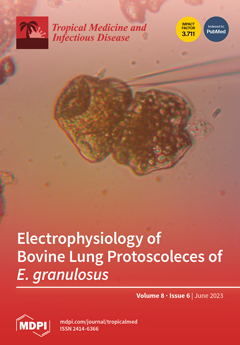Morocco is one of the richest countries in biodiversity in the Mediterranean region, especially in its ophidian fauna. In total, there are eight species of venomous snakes, with seven belonging to the Viperidae family, responsible for 67.2% of severe envenomation cases in the country.
Cerastes cerastes,
Daboia mauritanica and
Bitis arietans are considered among the most venomous vipers whose bites cause high levels of morbidity, disability or mortality. Despite their wide distribution in the kingdom, the incidence of these snakebites remains poorly understood and largely underestimated. Moreover, intraspecific variations in the venom composition significantly affect the effectiveness of antivenoms. Due to the unavailability of locally produced antivenoms, we evaluated the efficacy of
Inoserp-MENA, the only available antivenom in Morocco, against
C. cerastes,
D. mauritanica and
B. arietans. First, we conducted a comprehensive characterization of these venoms, including an LD
50 test to examine their toxicity and SDS-PAGE as a technique to analyze the enzymes responsible for biological activities, such as hemorrhagic and edematous activities and myotoxicity, which generate physiopathological effects in the skin, paws and muscles of envenomed mice. Then, we assessed the ability of
Inoserp-MENA antivenom to neutralize the toxic activities of Moroccan vipers. Our results indicate that the venom of
C. cerastes,
D. mauritanica and
B. arietans are toxic, causing severe alterations such as edema, myotoxicity, myonecrosis and significant hemorrhages with the formation of hemorrhagic foci.
C. cerastes venom is more dangerous in terms of lethality and hemorrhages, while
B. arietans venom is more edematous. The effects of
C. cerastes venom were effectively neutralized, but
Inoserp-MENA antivenom failed to protect mice against the toxic effects induced by
B. arietans and
D. mauritanica venom. The study reveals alarming shortcomings in the effectiveness of the current commercially available antivenom’s dosage and neutralization capabilities, highlighting the urgent need to develop a region-specific viper envenomation therapy.
Full article






